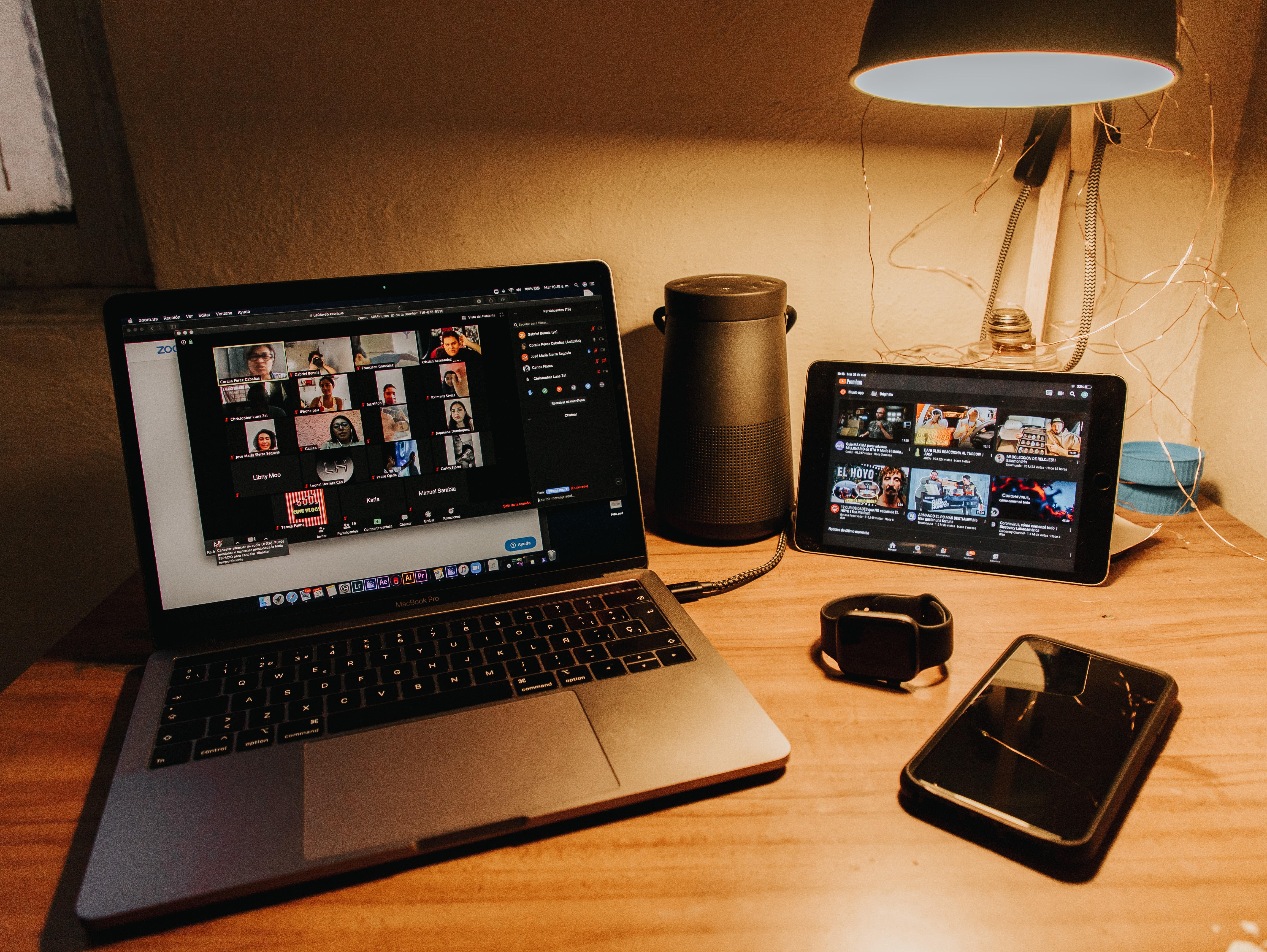Covid-19 came in like a hurricane and shook the world of work. In just days, millions of businesses and workplaces shut down across the economy, and millions more people were laid off or found themselves working from their living rooms or kitchen counters. This new reality forced employers to shift their business models to survive and made many workers reassess their priorities and expectations. In the meantime, hiring managers and recruiters had to learn how to swim in dark waters, competing for top talent in an unsteady market.

Today, over two years after the first strike of Covid, we are just beginning to see how employment and recruitment are evolving in the post-pandemic era: Labour markets across the world are witnessing an acute talent shortage, shifting the dynamics of finding the right talent. Recruiters have to adopt now novel ways of connecting with candidates worldwide, and the entire recruitment process is gradually going digital.
At the same time, new types of workers are coming up to the surface, remote work is becoming the "new normal", and the definition of a workplace is today more fluid than ever. As for employees, their demand for more flexibility in how they do their jobs and diversity in their working environment has made employers re-evaluate what they are willing to offer in order to attract and retain skilled candidates.
In this article, Templeton's tech recruitment experts explore how talent acquisition is changing and how recruiters, hiring managers and employers can take advantage of the new challenges and trends to hire top talent in a post-Covid world.
The Future of Recruitment: Trends, Challenges & Opportunities
Undoubtedly, the pandemic has changed the business landscape, possibly forever. And even if we don't know yet all the ways in which it will be different, we know that the way we live and work, as well as the way we do business, source and hire new candidates, will never be the same.
The Changing Dynamics of Work
Workplaces in 2022 are more dynamic, digital and flexible. And this is a direct reflection of how employees approach work, as the importance of a physical workplace for them is progressively declining.
Indeed, today's workers expect their employers to offer the flexibility they need to achieve a healthy work-life balance. For most employees, this translates into wanting to spend fewer days in the office and more days outside of it and having more freedom in how and when they work. Even before Covid-19, such trends were gaining momentum as the number of remote workers has been steadily growing for years.
At the same time, employees expect their organisation to offer professional development opportunities, have a moral compass and values that align with their own and be as diverse as their community. In addition, they no longer want to be dictated by the type of technology their companies use; they demand the tools and devices that will make their job more efficient, and they want to be able to choose for themselves the digital solutions that best fit their way of working—and their way of life.
Today's workers are tech-savvy, socially conscious, and no longer willing to settle for a company that doesn't prioritise their needs and wellbeing. In other words, they are more determined than ever to live their lives their way. And at the centre of this sits talent acquisition.
These new employee expectations forged by the pandemic fuel changes in how candidates look for work, how recruiters approach them, and how far companies go to ensure they're viewed as desirable employers. Hence, understanding these dynamics is important whether you're an employer, a hiring manager, or a recruiter.

Discover: What Do Candidates Want from Employers in 2022?
The New Types of Workers
Workforce classification was relatively easy in the past: They were full-time and part-time employees. And then, independent contractors, freelancers, locums, and all sorts of contingent and "gig" workers came into the picture. All these alternative employment models existed long before Covid, but it was only during the pandemic that businesses started leveraging the gig economy to the fullest.
Contingent and gig workers allowed companies to reduce expenses and increase flexibility: Organizations could quickly address changes and challenges within their business simply by explaining or shrinking their workforce. Moreover, within the gig economy, specialised talent could be easily found, engaged on-demand for less money, and kept on for as long as their skills are needed. At the same time, especially younger workers realised that contingent work gives them more control over their job, lifestyle and income.
Technology has also been a key driver for the expansion of the gig economy: Digital communication and collaboration tools enabled workers to do their jobs from pretty much everywhere, and their proximity to a physical office became less important. Meanwhile, as remote work was becoming more popular during lockdowns, industries like technology and financial services could expand their search for skilled candidates around the world, regardless of their location.
Hence, while many industries slowed during the pandemic, the gig economy grew exponentially, leading – consequently – to a change in the way people view and participate in this "sharing economy". According to a study by Mastercard, the global gig economy generates $204 billion in gross volume and is expected to grow by 17% by 2023.
The Talent Shortages
Despite experiencing a significant disruption throughout the pandemic, the job market is rebounding with a clear increase in vacant positions. As a result, companies are starting to fall back into the same situation they were in before Covid-19, where the open job vacancies outnumbered the skilled workers available.
To aggravate things for employers and hiring managers, job vacancies have not only returned to pre-pandemic levels (by the first half of 2021 in most markets globally) but have consistently risen since then. In the UK, for example, vacancies reached a record high of 1.29 million in January-March 2022, 50,000 higher than the previous quarter and 662,000 higher than a year previously.
With this pace, by 2030, the global economy will be short more than 85 million people, predicts the latest Korn Ferry study. And while the particulars may differ by geography or industry, much of the shortage is based on simple demography: Older workers are retiring faster than younger workers can get the training and experience they need to replace them.
Hiring teams and recruiters are under more pressure than ever to fill roles with those with the skills to meet market needs. In particular, three out of four (75%) companies today report talent shortages and difficulties in hiring the right people. Organisations are now exploring alternative recruiting strategies to fill skills needs both effectively and efficiently, like sourcing candidates within their existing workforce (internal labour market).

The Digital Transformation of Recruitment
During the pandemic, 88% of global workers were working from home, but that's not a new concept. Long before Covid-19 spread, almost 30% of employees used to work remotely – at least part-time, according to Gartner. Today, organisations around the globe are increasingly turning to remote work, and this trend will likely continue to rise as more Gen Zs enter the workforce and increase the demand for flexible work.
As a result, the majority of talent acquisition professionals agree that virtual recruiting will also be the new normal post-pandemic. It is not coming without its own challenges, though. As remote recruiting processes like video interviews and virtual onboarding are now more likely to be considered "must-haves" than "nice-to-haves", the digital transformation of recruitment and HR is becoming crucial.
Recruiters and hiring teams need to become more digitally aware to understand and utilise the new technologies that are shaping the field of recruitment. Digital communication tools and automation technologies (e.g. screening tools, chatbots, etc.) can give talent acquisition professionals the advantage of screening far more applicants in far less time, as well as the flexibility to recruit talent from across the world. IT solutions will also be important in the digital HR transformation, helping HR teams manage payroll, track job applications, and upskill employees with greater ease.
The Demand for Diversity, Equity and Inclusion
Coinciding with the pandemic was a wave of racial justice movements, and more people became aware of the inequities that minority groups face at work and beyond. As a result, diversity, equity, and inclusion emerged as important factors when considering job offers for most job seekers.
Indeed, today's workers demand respect, equity, and inclusion, and they are more than willing to pass by opportunities with companies that are not committed to DE&I– especially younger professionals, to whom DE&I "is core to their personal identities", according to Gallup.
As for companies, they now understand that they need to take DE&I issues seriously, whether they actually want to do the right thing regarding social issues or simply for the sole purpose of recruitment. Organisations with strong DE&I initiatives have a better social reputation and branding, and they are more likely to attract the best talent and have engaged employees with increased job satisfaction.
Hence, post-pandemic employers and HR leaders will focus more on recruiting diverse employees and building inclusive workplace cultures representing people of different ages, races and ethnicities, abilities and disabilities, genders, religions, cultures and sexual orientations.

Do you want to stay on top of the current hiring trends? Discover the Top 5 Hiring Trends for 2022: How HR Leaders Should Adapt
How to Recruit Staff in a Post-Covid World
Adapting to the myriad of changes in recruiting may seem daunting at first. Technology, skills, and expectations are all constantly shifting, after all. The challenges are there, but so are the opportunities.
Employers, HR leaders and hiring teams that will manage to leverage these trends to their advantage will soon discover that recruitment in the post-pandemic era is a promising field that revolves around a more intelligent as well as more determined generation of workers.
Here are five recruiting strategies you can implement to succeed in the race for top talent in a post-Covid world:
-
Embrace Remote Work and Recruitment
The most visible impact of Covid-19 was probably the introduction of remote work in our day-to-day work life. Almost half of working adults were working from home at times during the pandemic, and most of them (more than 8 in 10 workers) say they plan to hybrid work in the future, according to data from the Opinions and Lifestyle Survey (OPN).
Consequently, the willingness – and sometimes demand – of employees to work remotely has forced many employers and hiring managers to adjust their recruitment strategies to fit the new needs, which is yielding several benefits for them as well: Work-from-home opportunities act like a strong magnet for attracting and retaining staff long into the future, and remote recruitment offers effective ways that speed up the hiring processes and save money.
But most importantly, virtual recruitment makes sourcing candidates much easier and more diverse. The fact that you can hire people from around the world means your talent pool is literally unlimited. This wider pool of candidates increases your chances of finding the right people as well as introducing more diversity into your company or the organisation you're recruiting for.
In conclusion, before Covid-19, offering remote working options was considered an asset. Now it's more of a necessity. And as competition for top talent is now fiercer than ever, if you want to stay on top of your game in 2022 - and for the years to come, you need to meet the highly demanded expectation of offering remote work, and what follows – remote recruitment and onboarding.
-
Embrace the Digital Age
The future of recruitment is digital, and leveraging the benefits of the new technologies is crucial to adapt to this future effectively.
In point of fact, technologies designed to meet the needs of hiring managers, recruiters and candidates are key in hiring better talent faster and cheaper. For example, investing in good recruiting software can help you automate many of your processes, including candidate sourcing and interview scheduling. Similarly, you can use screening automation tools to narrow down the number of applications you need to go through to identify the most qualified candidates. Also, tools like chatbots can work in the background to automate the more administrative portions of recruitment.
Moreover, with AI-powered tools that use advanced algorithms, you can better determine what types of skills are most needed in your organisation and automatically assess and match the right candidates. Over time, these tools develop and sharpen themselves, producing clusters of valuable data that start to reveal applicants you might have overlooked initially.
But the role of technology should not be limited to just the search for new talent. Virtual communication tools can play an important role in nurturing a more global candidate pipeline, and IT solutions can help track and manage job applications. You can also use technology to showcase your brand and deliver a striking first impression to potential applicants.

-
Enhance the Candidate Experience
Let's assume you are the candidate in the following scenario: You have managed to land an interview at a company with an excellent reputation and even better pay. The day of the meeting finally came, but your interviewers were late, their attitude towards you made you uncomfortable, their questions were irrelevant to the role, and the whole process felt never-ending. On top of that, you never heard back from them again. If you actually had this experience, would you still want to work for that company or even encourage others to apply? Probably not.
Candidate experience pre, during, and post-recruitment can affect a company's reputation in the job market. According to a Kelly Services survey, 97% of candidates who were satisfied with a company's recruitment process would recommend it to others, and 55% of them would share their positive experiences on social media. Therefore, ensuring a positive candidate experience not only enhances your reputation but also attracts new talent long after the interview has ended.
Here are some tips to keep your candidates happy:
- Offer a more personalised experience: You can do several things to make your candidate's journey more personalised – from engaging in personal conversations and sending tailored branded material to diversifying your recruiting approach to match their needs and preferences.
- Appreciate your remote candidates: Adopt technology like video interviewing and employee engagement platforms to show your remote candidates they are important to you, regardless of the distance.
- Shorten the recruitment process: Cut down your time to hire and show your candidates you don't want to waste their time.
- Create job postings that actually work: Be specific about what you want from your ideal candidate, honest about what you have to offer, and transparent about your company and its culture.
- Go mobile: Ensure your career page and job application are both mobile-friendly and use texting for streamlined candidate communications.
- Reduce candidate stress: Make your candidates feel relaxed before the interview - offer them something to drink, engage them in a casual conversation and let them know how long the process will take.
- Give them feedback: Don't leave your candidates hanging after the interview. They will expect and appreciate your feedback, even if it's negative.
- Ask for feedback: Use an anonymous survey to monitor your candidate's satisfaction. This is a great way to understand what they want and create an even better candidate experience.
-
Make Diversity, Equity, and Inclusion a Priority
One of the most exciting changes in recruitment brought about by the pandemic was the massive expansion of the talent pool. Thanks to telecommuting and the transition to remote and hybrid business models, you can grow beyond your existing networks, not only by expanding where you are recruiting but who you are recruiting as well.
Eliminating the traditional geographic boundaries in recruitment was just the tip of the iceberg. Candidates that may have previously been discriminated against or were not typically considered in certain roles or industries now have more employment opportunities. For example, people with disabilities and mobility problems or individuals who need to work flexibly, such as parents with young children, are now more active in the job market.
Having a wider and more diverse talent pool can benefit your organisation in several different ways, apart from making you more attractive to prospective employees. However, recruiting diverse candidates comes with its own challenges. Recruiters will have to adopt new practices to identify and reduce biases in their talent acquisition processes, and companies need to create actionable goals regarding diversity and inclusion.
Some DE&I strategies worth implementing include:
- Introducing blind hiring processes and AI tools to eliminate biases in your hiring decisions.
- Using online tools to make your job postings gender-neutral and welcoming to all.
- Advertising your openings in less traditional spaces, including skill or community-specific job boards.
- Assessing job descriptions, career site content, and other communications to ensure language is unbiased and images reflect a diverse workplace.
- Talking proactively about DE&I before candidates even bring it up.
Bonus:
- Make sure that your Diversity and Inclusions plans are not "all talk". Today's workers value authenticity, and they would want to see how your promises on paper translate into actual commitments in action before committing to your organisation.

-
Focus on Your Existing Workforce
Before the pandemic, most businesses would focus their efforts on acquiring new talent to diversify their workforce and expand their skills base. Post-pandemic, labour and skills shortages made attracting the right candidates particularly challenging. Hence, employers and hiring managers were forced to shift their focus to retaining their current employees and looking for hidden talent within their own organisations.
While ongoing talent acquisition keeps playing an important role in most companies' growth strategies, retaining talent, especially excellent talent, is – or should be – a top priority as well. Retention is an important factor in maintaining business continuity and driving innovation, and it's all about keeping employees happy, productive and loyal to their employer. But how can you actually achieve better employee retention?
-
Offer Internal Mobility Opportunities
During the pandemic, a number of companies implemented internal mobility systems to fill critical roles. What was the outcome? Increased retention, higher levels of employee engagement, reduced cost and time to hire, as well as boosted agility throughout the organisation. So, next time you have a job opening, consider sharing it internally first.
-
Reward with Flexibility
Most companies can't afford to keep their employees happy by offering more benefits or alluring compensation packages. But there are other ways to improve employee satisfaction. A flexible working schedule, work-from-home options, flexible start and finish times, career breaks, choice of location, and shorter working hours are all attractive and cost-effective perks that any organisation can offer to find and retain top talent.
-
Invest in Training and Upskilling your Current Talent
Training and upskilling have only grown in importance in the post-Covid world, as employers emphasise the need for up-to-date skills within their existing workforce. In response, many employees prioritise opportunities to acquire new skills and obtain the experience they need to rise. A Deloitte survey, for example, found that among the top reasons Gen Z and Millennials leave their jobs are the lack of professional development and upward mobility.
Ready for Future Recruitment Success?
Covid-19 "crash-tested" recruitment and brought new trends, opportunities, as well as challenges into the talent acquisition spotlight. And while the above strategies can't eliminate these challenges, they can help position you and your organisation for recruitment success in the post-pandemic world.

Are you in search of top tech talent? We can help.
Templeton has over 26 years of experience recruiting thousands of skilled IT professionals across 40 countries. Find out more about our multi-award-winning recruitment services.
Do you know Which Recruitment Model Is Best for You?




